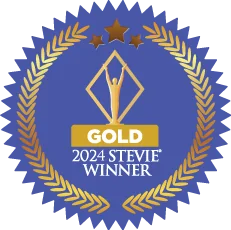How to Write a Strong Sales Proposal

In some ways, sales proposals are the overlooked middle child of the selling process. Sure, everyone knows their importance. But as a mid-funnel activity, sellers often place more emphasis on lead generation and closing. It’s understandable. Without an effective prospecting process, you won’t have leads to pursue nor deals to close.
This makes proposals a key component of your sales strategy. Considering the time devoted to prospecting and lead gen, proposals are the bridge to the close. With ineffective proposals, promising leads can quickly become lost opportunities.
There’s having a sales call—in other words, making crucial connections that convince your prospect to believe in your solution—and then there’s actually writing up the solution in a sales proposal. Verbalizing the solution might come naturally to you, but writing it out in the sales proposal not only takes time, it takes organization, strategy, and finesse. You may have made great headway in the sales meeting, but creating a poorly composed proposal will cause you to lose traction with the prospect.
The next time you find yourself drafting a new sales proposal, keep these key guidelines in mind:
1. Start with a Personal Touch
A polite and friendly personalized letter is always a great launching off point for your proposal. Start out thanking the prospect for their time and interest, and let them know you understand their situation by summarizing their objectives and the ways your solution will help them meet that goal. Focus the writing on the customer’s needs by outlining how your solution will solve their challenges. Be careful not to swing too far into talking about the value of your company and how amazing the features of your solution are. Instead, always bring it back around to the point: meeting the needs of the customer.
Then take a deeper dive and clearly show the value of your solution. Be precise when demonstrating how your products and services will not only meet needs, but how it will exceed them by benefitting the customer over the long term. There will likely be various ways your offering may help the customer. Bullet points are great for organizing information, so think about using them to list out the various value propositions. Bullets are also a way to communicate at a glance and not overwhelm the prospect with long paragraphs.
2. Conduct Research That’s Customized to the Client’s Needs and Goals
The best proposals include specific, concrete information that’s customized to the client’s situation, needs, and goals. In order to do that, you’ll need to conduct research and deep dive. Engage the buyer in carefully crafted discovery to draw out the information you need to write an effective proposal. This may take multiple touches and discussions, and that’s perfectly fine. Remember, this is a significant investment for both parties, so do it the right way.
You might also find in this phase that you uncover more issues that the client isn’t even aware of or didn’t think was relevant to the solution they’re seeking. Sometimes this becomes part of your proposal. Sometimes it won’t, but even in that scenario, you’ve still provided value to the prospect and that’s helpful for building trust and establishing your own credibility.
Expand your scope beyond just the customer. Look at their industry as a whole. See if you can find case studies or examples of analogous situations that are germane to the problems you’re hoping to solve. Being able to present yourself as knowledgeable about the market and industry-specific conditions matters.
3. Keep the Proposal Simple and Concise
Prospects are busy people. Like you, they have their daily activities. Of course, they also have a problem that brought them to you. And they have a vested interest in making a deal. However, this is not a foregone conclusion. As much as they want solutions, they don’t have time to dilly-dally. Complex proposals can be a big turnoff. Here are ways to keep yours simple:
- Add visuals
- Organize
- Call to action
For proposals, pictures really are worth a thousand words. Think of memes. While they can be overdone, the right visual makes the best lines stand out. The same is true in sales proposals. Visual aids, like photos, icons, tables, graphs, and charts, can help highlight and simplify complex data points without the need for extensive copy.
A common challenge of proposals is organization. The greatest solutions can get lost in poorly constructed proposals. Prospects shouldn’t have to sift through extraneous information for the data they need. They will tune out before you they reach the end. Of course, planning helps. Start with an outline. Consider your headings. As overviews of sections, keep these between one and five words.
Under the heading, use bullet points. These should be succinct and concise. Avoid too many bullets. This negates the very reason to use them. Also, try to keep the number of bullets consistent or close to it. Generally, think between three and five bullets per section.
At the end of your proposal, include a call to action. This too should be brief and entice prospects to do something. This can be as simple as clicking a link for additional information. It can also be the next steps they should take. The goal of any call to action is keeping the prospect engaged and the process moving forward.
4.Write Your Proposal for Your Customer, Not for You
A sales proposal is not the place to talk about how great you are. Nor is it the arena for you to simply list deliverables or features and benefits. Rather, it’s your chance to demonstrate how the deliverables, features, and benefits connect directly to the buyer’s problems and solve the issues they’re trying to remedy. Spend considerable real estate on this portion – it’s the heart and core of the proposal. The proposal is about the prospect and what you can do for them.
How to Build Credibility and Value with Your Proposal
In sales proposals, value can be a determining factor. If prospects see, understand, and appreciate your value, they are more likely to close with you. Of course, price is always contingent on value. Buyers want to know what they get for the money they spend. However, price alone is not the only consideration of value. There are intangibles. When discussing value in proposals, consider these tips:
- Demonstrate commitment
- Highlight service levels
- Explain the long-term, cost-benefit analysis
- Specify deliverables
- Prove competence, professionalism, and dedication
One key element of value is a seller’s commitment. This will not appear on a balance sheet. There is no quantifiable numerical value that factors into price. However, it is a value prospects sense, feel, and want. It starts with rapport. It moves through trust and into relationships. In proposals, as you discuss problems, products, and solutions, never forget people. Demonstrate your commitment to helping them.
In a perfect world, products would last forever. However, even the best products fail. Parts wear out. It’s the nature of manufacturing. Your prospects know this better than you do. In fact, it’s often a central subconscious concern. In proposals, highlight your warranties and service agreements. These address the prospect’s fears and provide security. They are also prominent factors in price. When products fail at 3:00 a.m., prospects want to know they’ll get someone to help. This value mitigates higher prices.
In proposals, explain the long-term, cost-benefit analysis of your solutions. In discussions of products and prices, prospects want numbers. Sellers want to present value before price. In this dichotomy, your operative term is cost-effective. When you illustrate how a solution saves money, prospects understand the price. Once they understand, they’re more likely to accept.
Craft Winning Sales Proposals for Success
With all that go into sales proposals, it’s easy to overlook some things. However, never skimp on the details, such as deliverables. Sellers can sometimes be so myopic on deals that they neglect delivery. Or they figure this is something they’ll work out later. In fact, consistent, on-time, problem-free delivery is another main concern for prospects. It’s also another value point to emphasize in proposals.
Taken together, these things create the value sellers must establish before they discuss price. It’s how sellers prove their competence, professionalism, and dedication that makes a number worth the price.
If a sale is a journey, it’s easy to focus on the beginning and end. Sellers know they must prospect to generate leads. And closing deals is a rush worth anticipating. Hence, the sales proposal’s middle status. Sure, sellers know its importance. But as a central funnel activity, sellers figure they’ll cross the proposal bridge when they get to it. When you do, remember proposals remind prospects they were right to trust you. And they’re a reason to continue that trust to see them to the close.
Updated 03/25/2025

- Account Planning (11)
- Awards (50)
- Client Testimonial (37)
- Personal Branding (19)
- Podcast (11)
- Research (68)
- Sales Career Development (85)
- Sales Coaching (153)
- Sales Consulting (133)
- Sales Culture (164)
- Sales Enablement (340)
- Sales Leadership (108)
- Sales Management (242)
- Sales Negotiation (16)
- Sales Prospecting (124)
- Sales Role-Playing (18)
- Sales Training (229)
- Selling Strategies (255)
- Soft Skills (67)
- Talent Management (92)
- Trusted Advisor (27)
- Virtual Selling (41)
- Webinar (10)


























